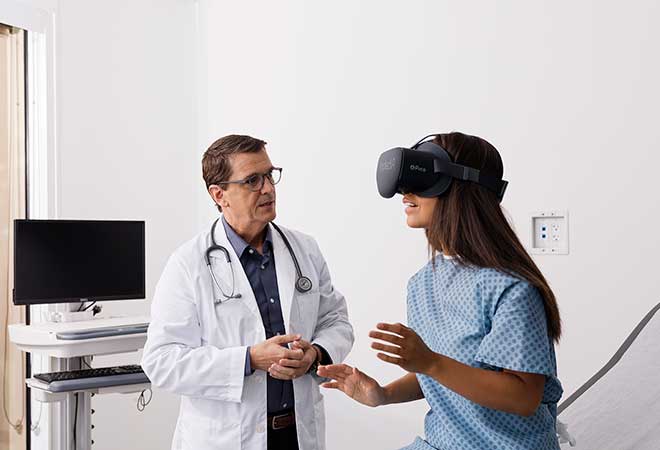Researchers from the Lodz Polytechnic will help refugees from Ukraine treat psychological trauma caused by the war with the help of virtual reality technology. Advanced technology is slowly being integrated into the conservative field of psychotherapy. The traditional trappings of psychotherapy sense usually include chairs for the professional and the client. However, advances in technology are improving and modernizing the therapeutic approach, improving the quality of therapy. Online courses, video chats, various smartphone apps, e-books, and pamphlets have become an integral part of psychotherapy.
Virtual reality has entered the psychotherapeutic process as a promising and effective auxiliary method. Even during the birth of the idea of virtual reality in science fiction novels, we began to consider the prospects and possibilities of expanding the scope of this method, but today the tale has come true.
What is the point?
Often in therapy, we use innovative, put techniques to use the imaginative function to process problem areas emotionally. Because the limbic (emotional) system does not distinguish between reality and fantasy, we can work in improvised facts to structure specific processes.
But the cortex is not so "naive." It clearly distinguishes where is truth and where is fiction and regulates the work of the emotional system. Virtual reality technologies allow to "qualitatively" immerse the consciousness into the improvised reality and create the basis for removing some mental blocks" that do not allow to correct the problem areas.
Working with phobias in VR
Virtual reality therapy best results when working with phobias, especially fear of flying (aerophobia). We immerse the person in an improvised reality where the object of their anxiety is located (dogs, snakes, spiders, the plane cabin), and we gradually increase the level of exposure. For example, we increase the number of dogs and the degree of their aggression, or we imitate the circumstances of being in an airplane - the client is sitting in the chair, the plane takes off, lands.
The method is a variation of the exposure or desensitization technique: the longer we contact the object of fear, the lower the level of stress is induced.
A critical component is regularity. Working in a virtual reality environment is adequate for aerophobia, as a person does not need to take weekly flights.
From April 7 to 20 in Poland, Lodz, there is a unique program under which refugees from Ukraine can undergo a therapeutic session using modern technology.
This session will consist of moving into a virtual world. The participant will be invited into a virtual mountain manor with a sitting area, a fireplace, and a window with a magnificent panorama. Virtual reality should focus a person's thoughts on pleasant or neutral topics. The soundtrack in the virtual world will be fully translated into Ukrainian.
One session lasts 20 minutes. Participation will be free for refugees from Ukraine. You can sign up via e-mail at [email protected] (Ukrainian) or [email protected] (Polish).
Recall that Lodz has launched Poland's first mobile application guide for refugees from Ukraine. It is available in Ukrainian and Polish. The app will answer all questions related to life in the city.

